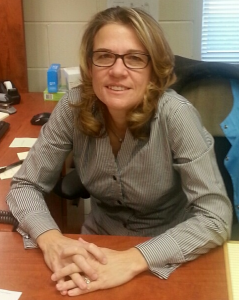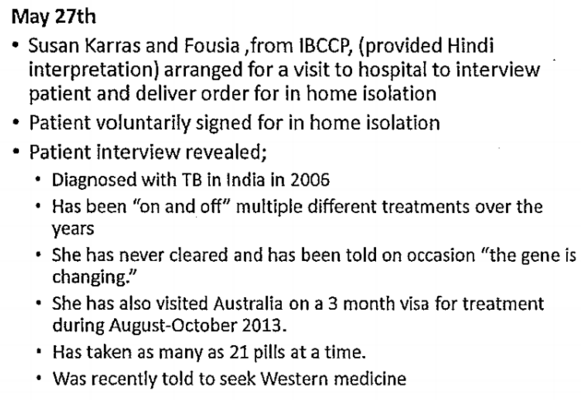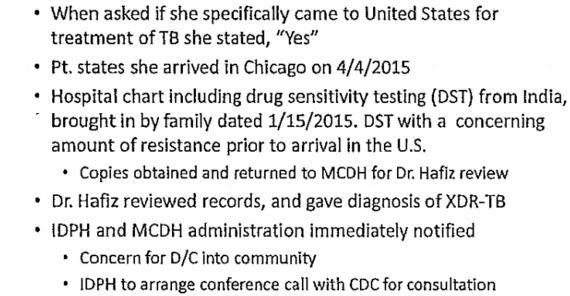The richest man in Illinois does not often give speeches. But on a warm spring day two years ago, Kenneth C. Griffin, the billionaire founder of one of the world’s largest hedge funds, rose before a black-tie dinner of the Economic Club of Chicago to deliver an urgent plea to the city’s elite.
They had stood silently, Mr. Griffin told them, as politicians spent too much and drove businesses and jobs from the state. They had refused to help those who would take on the reigning powers in the Illinois Capitol. “It is time for us to do something,” he implored.
Their response came quickly. In the months since, Mr. Griffin and a small group of rich supporters — not just from Chicago, but also from New York City and Los Angeles, southern Florida and Texas — have poured tens of millions of dollars into the state, a concentration of political money without precedent in Illinois history.
Their wealth has forcefully shifted the state’s balance of power. Last year, the families helped elect as governor Bruce Rauner, a Griffin friend and former private equity executive from the Chicago suburbs, who estimates his own fortune at more than $500 million. Now they are rallying behind Mr. Rauner’s agenda: to cut spending and overhaul the state’s pension system, impose term limits and weaken public employee unions.
“It was clear that they wanted to change the power structure, change the way business was conducted and change the status quo,” said Andy Shaw, an acquaintance of Mr. Rauner’s and the president of the Better Government Association, a nonpartisan state watchdog group that received donations from Mr. Rauner before he ran.
The rich families remaking Illinois are among a small group around the country who have channeled their extraordinary wealth into political power, taking advantage of regulatory, legal and cultural shifts that have carved new paths for infusing money into campaigns. Economic winners in an age of rising inequality, operating largely out of public view, they are reshaping government with fortunes so large as to defy the ordinary financial scale of politics. In the 2016 presidential race, a New York Times analysis found last month, just 158 families had provided nearly half of the early campaign money.
Many of those giving, like Mr. Griffin, come from the world of finance, an industry that has yielded more of the new political wealth than any other. The Florida-based leveraged-buyout pioneer John Childs, the private equity investor Sam Zell and Paul Singer, a prominent New York hedge fund manager, all helped elect Mr. Rauner, as did Richard Uihlein, a conservative businessman from the Chicago suburbs.
Most of them lean Republican; some are Democrats. But to a remarkable degree, their philosophies are becoming part of a widely adopted blueprint for public officials around the country: Critical of the power of unions, many are also determined to reduce spending and taxation, and are skeptical of government-led efforts to mitigate the growing gap between the rich and everyone else.
“There was never so much money behind these efforts,” said Iris J. Lav, formerly a senior adviser at the Center on Budget and Policy Priorities, a left-leaning economic think tank in Washington.
“It has gotten much stronger in the last five or six years,” Ms. Lav continued. “There’s the sense of an opening, of a discontent with the old model. It’s about social insurance, the social compact — who’s responsible for whom?”
Illinois was fertile ground for the movement. Four of the state’s last 10 governors have gone to jail. Decades of mismanagement by state officials of both parties have left Illinois with more than $100 billion in unfunded pension liabilities, among the most of any state. Public employee unions, assured that the state’s Constitution made their retirement benefits untouchable, focused on lobbying for other spending. By last year, the state owed billions more in unpaid bills.
And tax increases are particularly difficult in Illinois, where other state constitutional provisions ban raising taxes solely on the rich. A temporary income tax boost presided over by the state’s last Democratic governor, Pat Quinn, was resented by many voters
The future governor was among those fuming. Around Chicago, Mr. Rauner, a Republican, was known for dashing off angry, blind-copied emails about the state’s fiscal woes to a long list of fellow businessmen and political leaders. Some of those who coalesced around his campaign, like Mr. Griffin, had also backed Mayor Rahm Emanuel of Chicago, a Democrat, in his battles with teachers’ unions. Others had collaborated on endeavors including Chicago’s Olympic bid, or the Civic Committee of the Commercial Club of Chicago, a group of wealthy and politically active business leaders. (Mr. Rauner, Mr. Griffin and other supporters declined requests for interviews.)
“They’re not what you would call the traditional corporate world,” said William M. Daley, a Chicago hedge fund executive and former chief of staff to President Obama, who served on Mr. Rauner’s transition team. “They come with a very political and philosophical bent.”
Mr. Daley added, “I think they believe philosophically in that business mentality and that strong public unions are a root of all evil in governing places like Illinois or Chicago and New York and California.”
To bring about a revolution in the Illinois Capitol, in Springfield, Mr. Rauner and his allies have created what amounts to a new campaign economy, in which union money has long been the financial lifeblood of both parties. Contributing millions to his own campaign, Mr. Rauner triggered a state law that removes limits on campaign contributions when a wealthy candidate spends heavily on his or her own race.
The law, intended to limit the influence of the wealthy by providing a level playing field, had the opposite effect: Freed of the restraints, supporters of Mr. Rauner poured millions more into his campaign, breaking state records. About half of the $65 million he spent through last year’s election came from himself and nine other individuals, families or companies they control. Mr. Quinn, the incumbent, spent about $32 million, with many unions making mid-six-figure contributions.
Mr. Rauner’s biggest donor was Mr. Griffin, who gave $5.5 million and put his private plane at Mr. Rauner’s disposal. Mr. Rauner’s allies spent millions on political advocacy groups, research organizations and party committees. The Chicago Sun-Times reversed its no-endorsement policy to back Mr. Rauner, who was a part-owner of the paper before he ran for governor.
“He didn’t have to play by the same rules as other candidates,” said Bill Hyers, the chief strategist to Mr. Quinn. “He just kept on spending.”
Never before in modern Illinois politics had so few people provided so much of the money for campaigns. The size of the average contribution in last year’s general election almost tripled over those made in the previous governor’s race, according to a Times analysis of campaign records collected by Illinois Sunshine, a project of the Illinois Campaign for Political Reform.
Local Republican organizations found themselves flush with cash. Mr. Rauner blanketed the state with ads promising, vaguely, to “shake up Springfield” and slammed Mr. Quinn as an insider beholden to special interests.
Attacks on Mr. Rauner’s wealth fell flat, even as he splashed around money in flamboyant ways: Late in the campaign, he drove up to a credit union on Chicago’s predominantly black South Side, depositing $1 million to support small-business loans.
“It had never happened before,” said Otis Monroe, a community activist in Chicago. “We said, ‘If you want black votes, you should invest in African-American-owned initiatives.’ Rauner was the only one who responded.”
On Election Day, Mr. Rauner won every county except Cook County, which encompasses Chicago. That evening, he giddily declared to his supporters: “This is our time. This is a transformational period. We will not accept the status quo. We are going in a new direction — the voters have spoken.”
The eye-popping sums continued to flow in the weeks that followed. On the last day of December, shortly before inauguration, Mr. Rauner, Mr. Griffin and Mr. Uihlein poured an additional $20 million into Mr. Rauner’s campaign committee. The money was intended to help Mr. Rauner beat back union pressure on state lawmakers during the legislative session ahead.
All told, the Griffin family’s contributions to Mr. Rauner through the end of 2014 came to $13.6 million — more than the combined sum donated to Mr. Quinn by 244 labor unions.
For Mr. Rauner, the election results affirmed his agenda to shrink government and make the state more friendly to business.
But voters seemed torn. Along with electing Mr. Rauner, they gave Democrats a supermajority in both houses of the legislature.
They also approved two advisory ballot measures. One proposed an increase in the state’s minimum wage, something Mr. Rauner had told a candidate forum he was “adamantly, adamantly against raising.” Another urged lawmakers to amend the Illinois Constitution to allow a millionaires-only income tax increase, something Mr. Rauner had campaigned against.
Mr. Rauner was undeterred. Immediately after taking office, he unveiled a strikingly ambitious policy agenda, one with a more ideological tinge than even some Republicans had expected.
Along with expected cuts to spending and property taxes, he proposed tort reform; local “right-to-work zones,” where union membership and dues would be voluntary; and a half-dozen constitutional amendments. He sought to bar public unions from making contributions to state lawmakers — state contractors are already barred — and in February issued an executive order prohibiting public employee unions from collecting mandatory fees from state workers who are not members.
Mr. Rauner and his supporters believed such changes were necessary to fix Illinois: Only by disempowering the unions and making the state more hospitable to business, they have argued, can revenue grow fast enough to fix its financial problems.
But despite voters’ deep unhappiness with the direction of the state under Mr. Rauner’s predecessor, they quickly soured on their new governor. Just two months into his term, Mr. Rauner found that his job approval rate was around 36 percent, according to a poll by the Paul Simon Public Policy Institute. Almost half of Illinois voters favored either tax increases or a combination of increases and spending cuts to fix the budget.
Mr. Rauner has since signaled he will discuss new revenues as part of a budget deal, but only if the legislature includes some of his union restrictions or other policy changes as part of the deal.
“I’ve been one who thought he misread his mandate,” said David Yepsen, the director of the Paul Simon Public Policy Institute. “People were ready for a change, but the emphasis on attacking the labor movement, that really poisoned the water here.”
The unexpected rift between Mr. Rauner and his constituents echoes a greater divide between the political views of the very wealthy and those of the broader public, one that has taken on new significance as the rich invest more time and money in politics.
The voters in Illinois should look to Wisconsin as the example of what the new, ultra-right Republican party brings: outlawed public...
Around the same time that Mr. Rauner began running for governor, a group of researchers based at Northwestern University published findings from the country’s first-ever representative survey of the richest one percent of Americans. The study, known as the Survey of Economically Successful Americans and the Common Good, canvassed a sample of the wealthy from the Chicago area. Those canvassed were granted anonymity to discuss their views candidly.
Their replies were striking. Where merely affluent Americans are more likely to identify as Democrats than as Republicans, the ultrawealthy overwhelmingly leaned right. They are far more likely to raise money for politicians and to have access to them; nearly half had personally contacted one of Illinois’s two United States senators.
Where the general public overwhelmingly supports a high minimum wage, the one percent are broadly opposed. A majority of Americans supported expanding safety-net and retirement programs, while most of the very wealthy opposed them. And while Americans are not enthusiastic about higher taxes generally, they feel strongly that the rich should pay more than they do, and more than everyone else pays.
Advertisement
“Probably the biggest single area of disconnect has to do with social welfare programs,” said Benjamin I. Page, a political scientist at Northwestern University and a co-author of the study. “The other big area has to do with paying for those programs, particularly taxes on high-income and wealthy people.”
Illinois, Mr. Page added, is “a case study of the disconnect in action — between what average citizens want the government to do and what it does.”
In many states, however, including old union strongholds of the Midwest like Indiana and Ohio, a rising distrust in government has proved a more powerful force in mobilizing voters — particularly with enough money behind it. In Illinois, Mr. Rauner and his allies have responded to the budget impasse with a redoubled, well-financed effort at persuasion.
To encourage Republican lawmakers to stick with him on tough votes, the governor has contributed hundreds of thousands of dollars to them. In April, ex-Rauner aides set up Turnaround Illinois, a super PAC designed to support state lawmakers who backed his agenda and “oppose those who stand in the way,” according to state filings. The group’s main contributor is Mr. Zell, the Chicago investor and Republican donor, who gave $4 million.
In June, after Mr. Rauner and lawmakers failed to reach a budget deal, Turnaround Illinois spent close to $1 million on television ads assailing Democrats.
The true impact of their financial muscle may not be felt until the legislative elections next fall, in which Mr. Rauner’s allies could again exploit an opening in the campaign finance law to spend unprecedented sums. (The same provision that removed the caps on Mr. Rauner’s campaign lifts them in any legislative race in which a “super PAC” spends more than $100,000. Mr. Rauner’s group has enough money to trigger the law in more than two dozen races.)
Mr. Rauner’s closest supporters hope to elect more Republicans. But some wealthy families, mindful that Democrats are likely to control the legislature for the foreseeable future, have financed an even more ambitious goal: to carve out a new faction of Democrats more willing to reach a compromise with the governor.
That effort has raised more than $14 million, in donations that rival the largest contributions in the presidential campaign. One million dollars came from Helen Zell, Mr. Zell’s wife, and $2 million from the head of a financial firm in which Mr. Rauner is an investor. The largest disclosed contribution came from hundreds of miles beyond Illinois: The former Texas energy trader John Arnold and his wife, Laura, gave $5 million.
Mr. Arnold, a Democrat, declined to be interviewed for this article. But in an essay published last year, he described himself as a counterweight to traditional interest groups like labor unions and corporations.
His goal, Mr. Arnold wrote, was “to counterbalance these entrenched forces, on the right and the left, by providing policy solutions rooted in objectivity and solid analysis.”
For the moment, Illinois is creaking along, polarized and deeply discontent with its leaders. Five months into the fiscal year, the state has no budget. A combination of court orders and partial appropriations bills has kept the government in operation, but at a level of spending that exceeds the state’s current revenue.
Now, every month, Illinois falls even further behind on its bills. Illinois politicians, on the other hand, are flush as never before.
As of early November, Mr. Rauner and the state’s new super PACs had a combined $36 million available to spend. The state’s 15 best-funded labor union PACs, along with campaign committees controlled by Democratic legislative leaders, had slightly more than half that, but are likely to put in millions more in the months ahead.
Said Mr. Shaw, of the Better Government Association, “I think he views this as a very long, long term war.’’
Sarah Cohen contributed research.



















